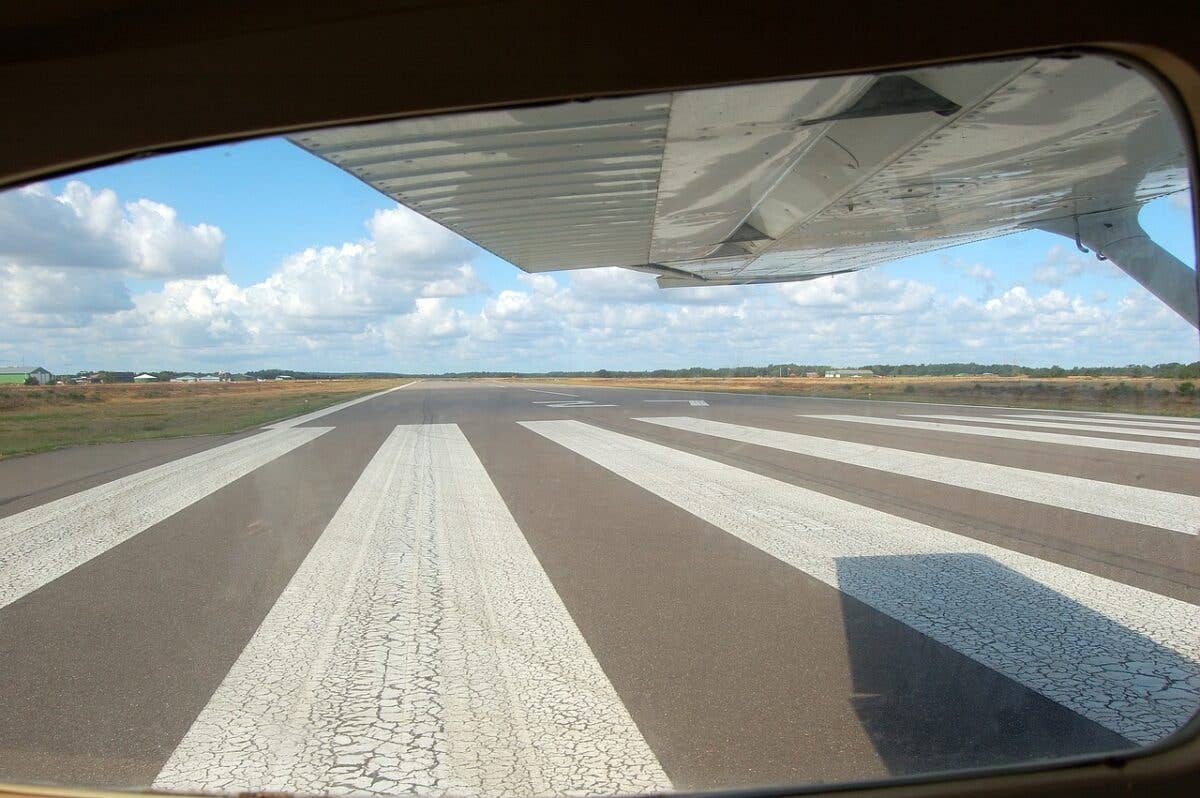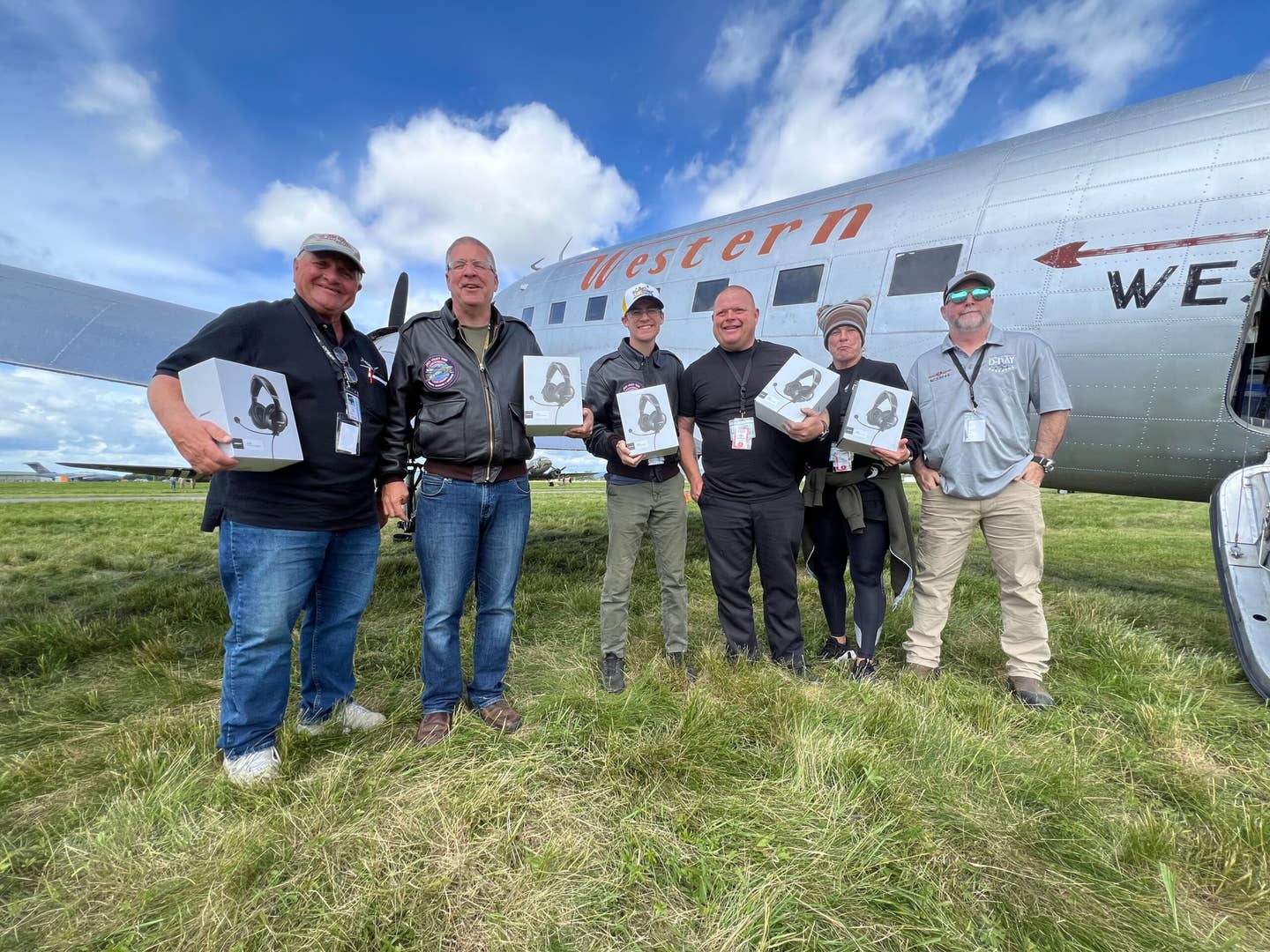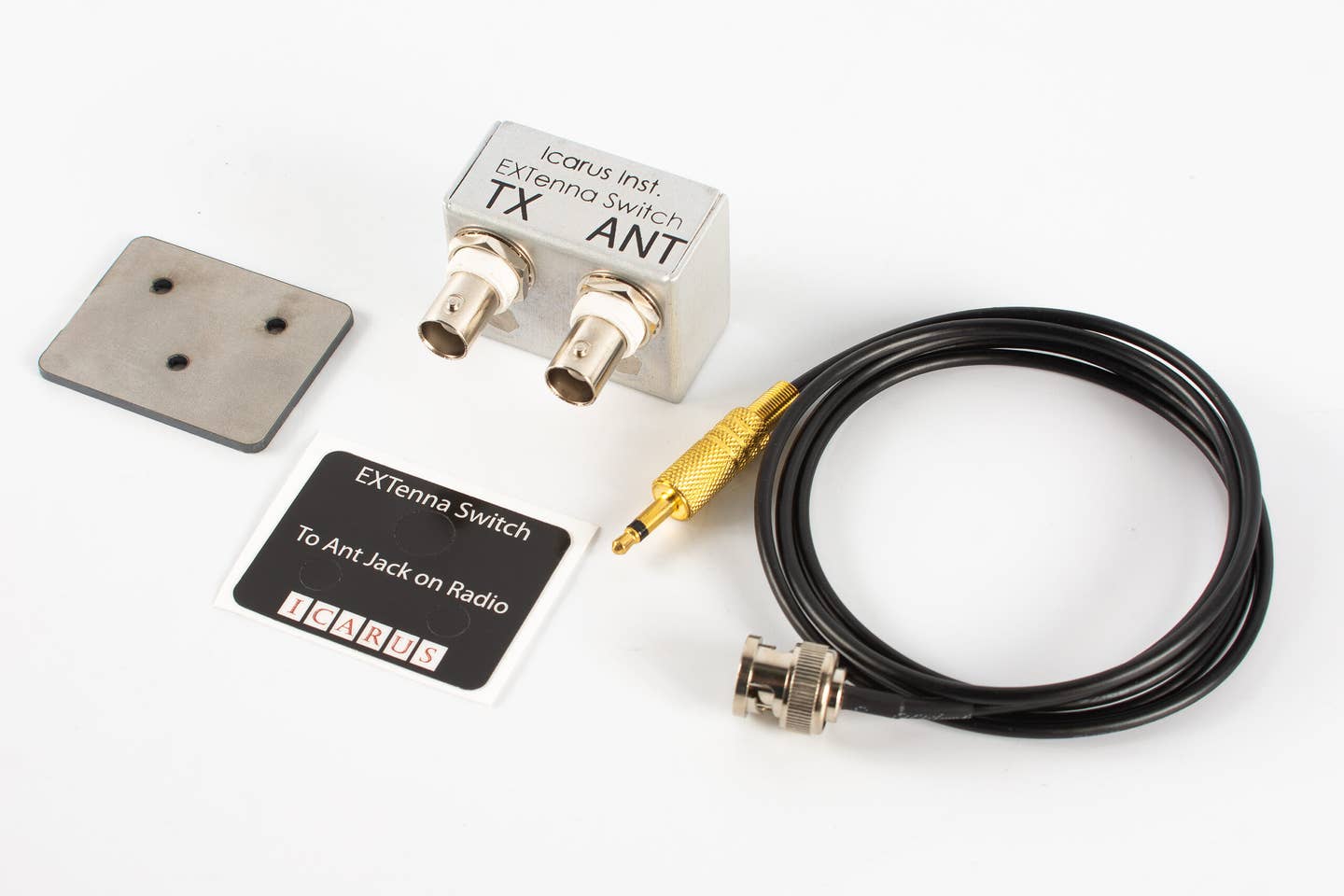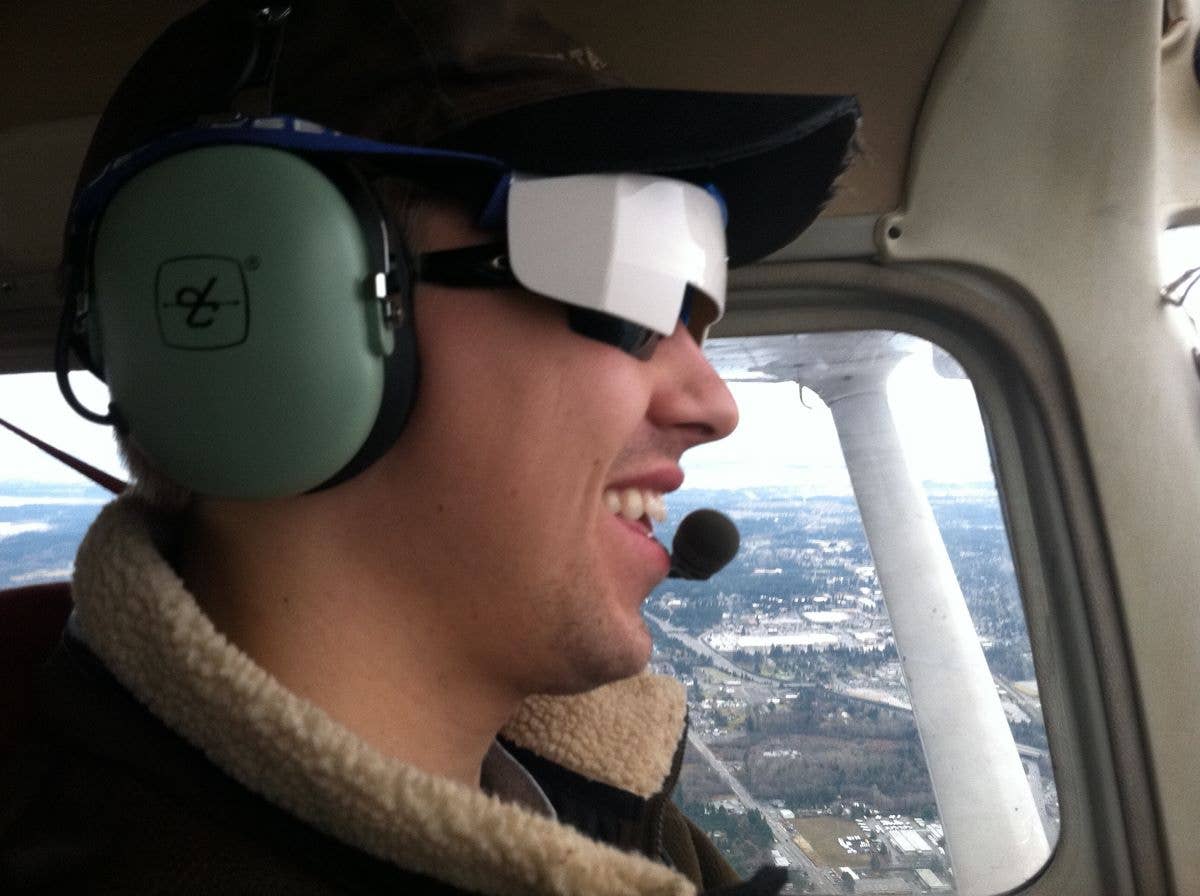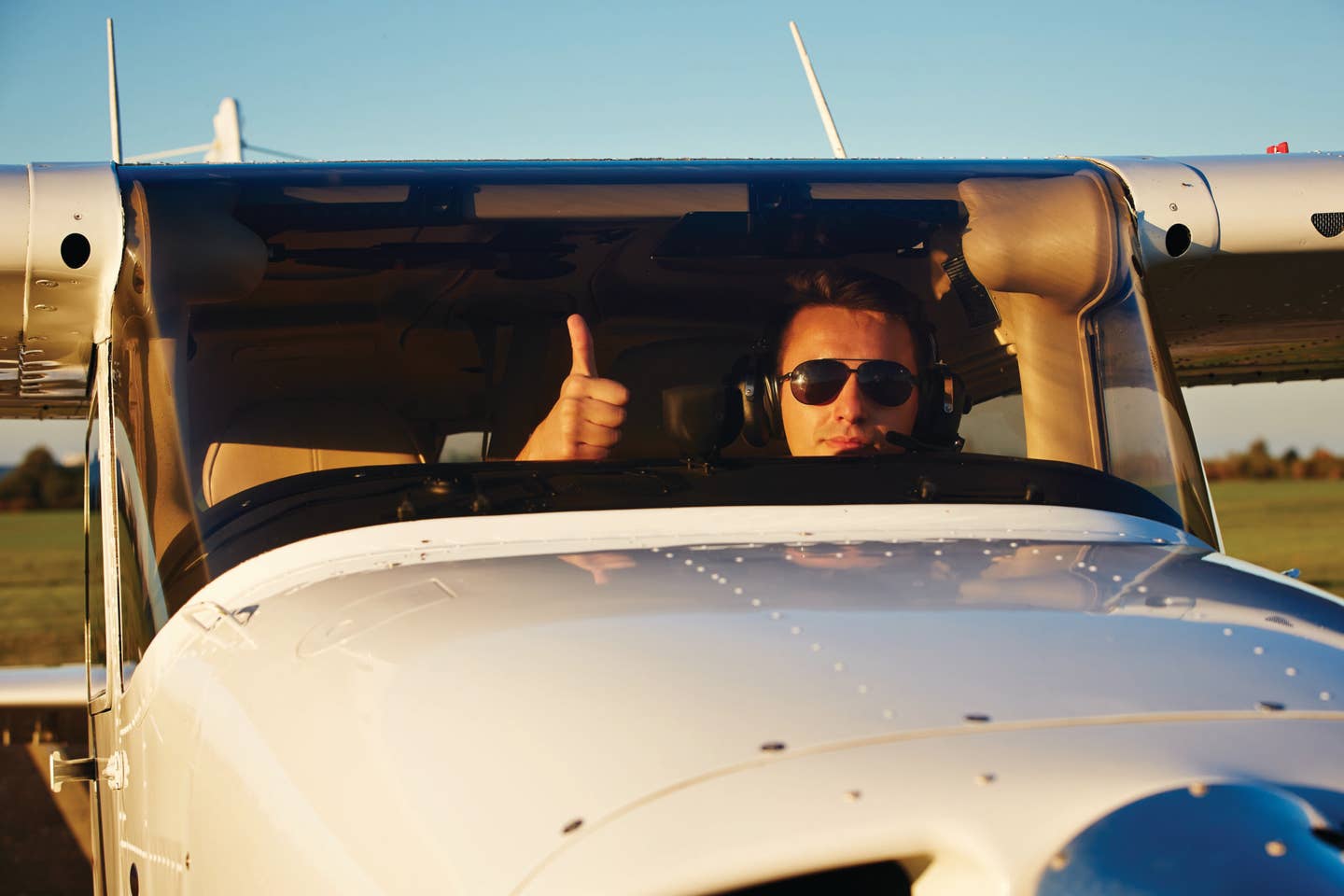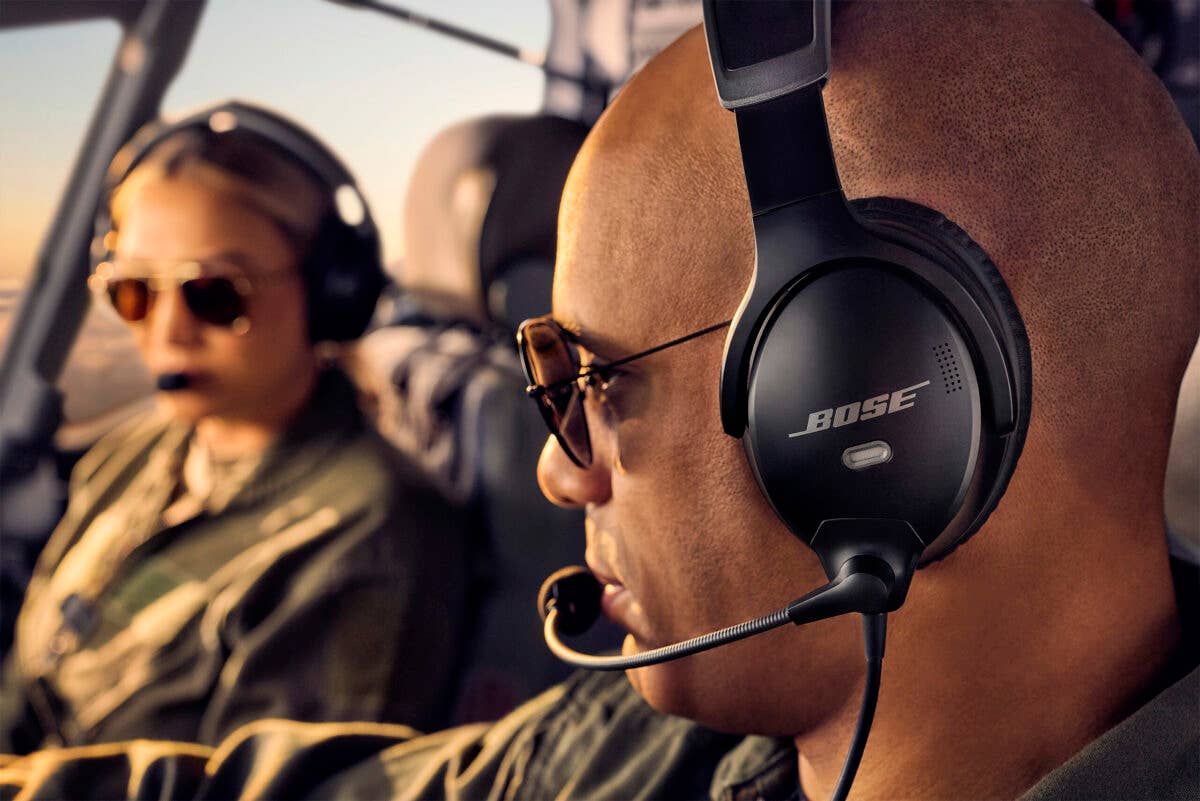Does the Pilot Watch Still Have a Role in the Cockpit?
AVI-8 Hawker Hunter timepiece makes a case for old-school instrumentation.

The AVI-8 Hawker Hunter pilot watch can be a helpful cockpit companion. [Credit: Jonathan Welsh]
A friend recently asked if pilot watches are still “a thing,” given the many devices, both portable and panel-mounted, that are available for telling time in flight. I told him they certainly are, but for different reasons today than when Charles Lindbergh and Wiley Post were crossing oceans.
In fact, I have spent the last several weeks flying with a new pilot watch, the AVI-8 Hawker Hunter Atlas Dual Time Chronograph, which has taken the place of a sports watch that had become my default flying timepiece.
The new watch, with multiple dials, a rotating bezel, and red trim, is eye-catching compared with the admittedly bland model it replaced on my wrist. But I wondered if it would add anything to the flying experience beyond the convenience that makes any watch a relevant pilot tool.
A Cockpit Helper
Having a watch still makes flying easier and safer. When I was learning to fly, my instructor made it clear that a watch was part of my required survival gear, along with a Leatherman tool and flashlight. This was not because the analog clock in the panel of the Cessna 172 trainer had stopped. A watch with a rotating bezel was simply handier for timing my travel along the 10-nm increments of the course lines I drew on the sectional chart—and for knowing when my hour was up.
As GPS and other digital avionics made their way into the cockpit, I continued to use my watch for quick reference. Glancing at one’s wrist for a time check seems so natural. These days, though, my concern with time has more to do with transporting kids to and from school and sports practices than precise navigation.
Charms of the Past
This is where the AVI-8 watch began to shine. Some of its features, including an additional hour hand I used to mark Zulu time, made it more useful and fun. Its old-fashioned charm encouraged me to brush up on pilotage skills and renew my subscription for paper sectional charts. Last weekend I flew to a couple of distant airports to which I had soloed as a student, without referring to GPS. It was just like old times.
Speaking of truly old times, watches were vital instruments during the early decades of aviation because time was an element in nearly every calculation pilots made, such as distance traveled, fuel burn, and correcting for wind. After his famous transatlantic flight, Lindbergh worked with Longines to develop an “hour angle” watch that made it easier for pilots to plot their position by tracking the earth’s rotation.
Today modern avionics make so many calculations for us that watches can seem like little more than decorations. And what is wrong with that?
What it Means Today
This is where things become subjective. I believe the right watch—one with a reasonably large face, sturdy metal case, and some weight to it—can be such a pleasure to use that a pilot would not depart without it. I notice that several of my flying friends who, like me, were impressionable children in the 1970s when general aviation was booming, have developed an affinity for period-appropriate accessories that match the V-Tail Beech Bonanzas, Piper Comanches, and in my case, Commanders that they fly. The right watch is a vital component of the overall effect. Call it nostalgia, with a little vanity thrown in.
When you are happily aloft in your aircraft, headed to one of your favorite destinations and feeling in command, like John Wayne in The High and the Mighty, checking the time on a watch that looks great, feels substantial and makes you smile, and can add to the joy of flying.
Besides, if you find yourself flying with a partial panel you might need a way to time those standard-rate turns. Either way, AVI-8 can help.

Subscribe to Our Newsletter
Get the latest FLYING stories delivered directly to your inbox

